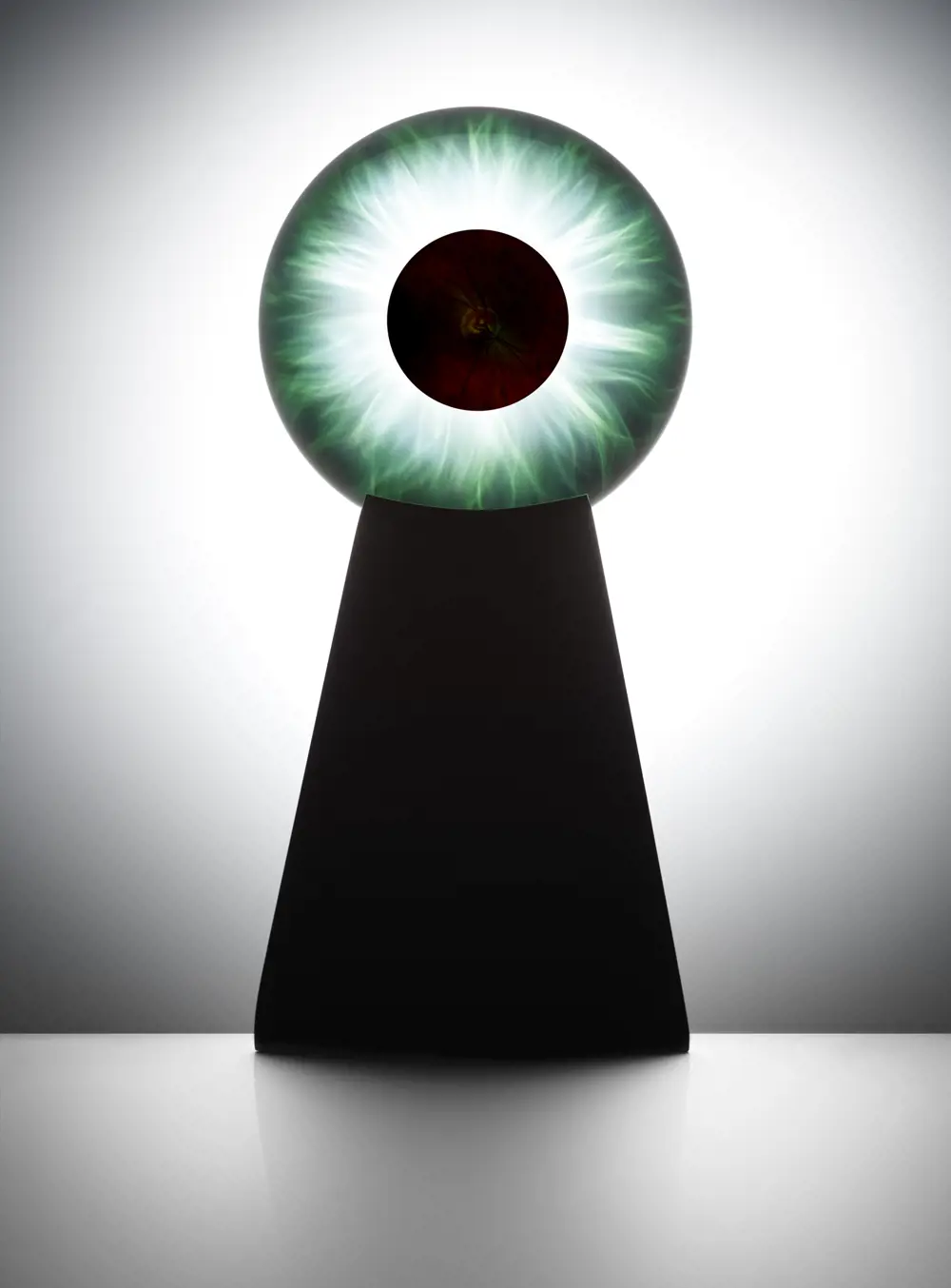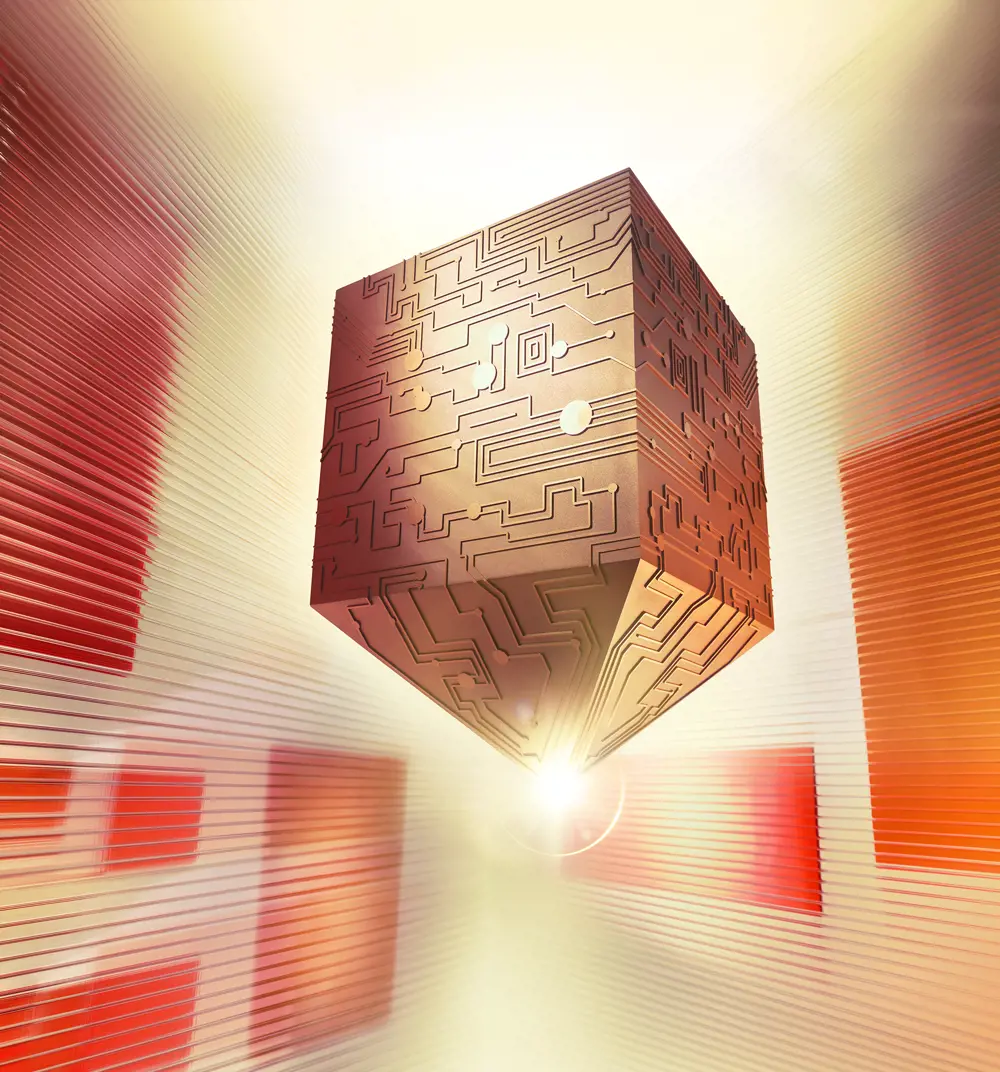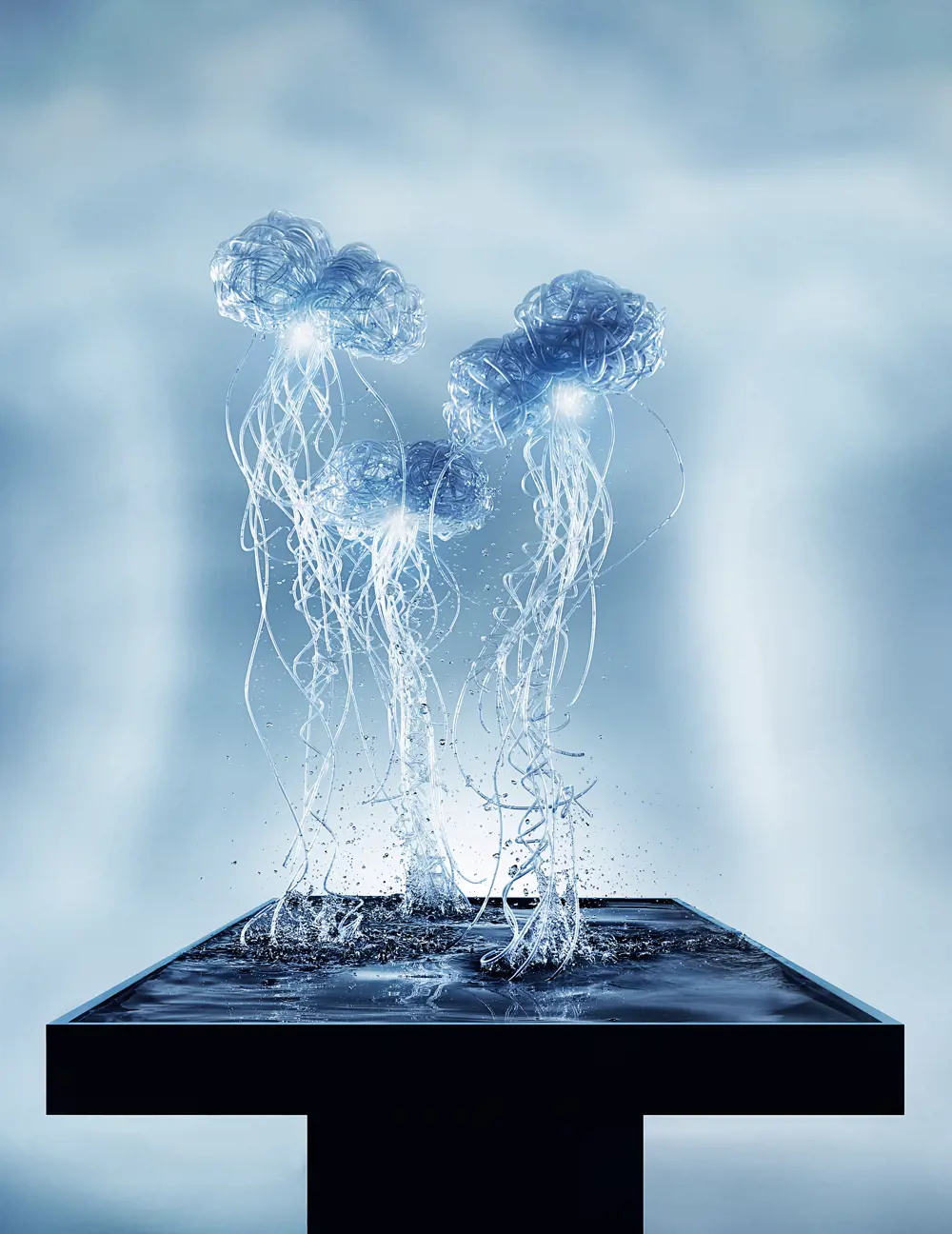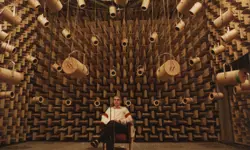
How a photographer turned innovative engineering ideas into art
From the CT scanner to the Raspberry Pi microcomputer, MacRobert Award winning innovations have changed the world. The first award in 1969 was made jointly for two iconic innovations: to Rolls-Royce for the Pegasus engine that powers the Harrier Jump Jet and to Freeman, Fox and Partners for the aerodynamic deck design of the Severn Bridge. Subsequent winners have included the engineers behind advances ranging from catalytic converters and the roof of the Millennium Dome to intelligent prosthetic limbs.
When the award celebrated its 50th anniversary, Ted Humble-Smith talked to the engineers who developed the concepts behind 10 former winners and has repeated the process to depict eight more winning innovations for its 55th year.
He says that joy of these projects is getting behind the finished product and finding out the journey that led to success. “The sheer determination of people never ceases to amaze me. The lengths they go to in order to bring their idea to life, the wonderful imagination and creativity that is involved with bringing something new into the world is so uplifting to engage with.
“All the MacRobert Award winning innovations are incredibly complicated, so when working on a project like this, you have to go through a sort of distillation process to get across something that people can understand. For me it was incredibly exciting to start with an innovation, then go back and do the research, taking the opportunity to meet the engineers who worked on these projects and then planning how to capture that story in a single image.”
The stories that come out during Ted’s discussions with the engineers behind the winning innovations form the backbone of his creative vision – this can be a single word or a distillation of a 30-year journey. “All of the winners are very kind and generous with their time, and very patiently explain using accessible language,” he adds.
Each one of the innovations he focuses on has had an impact, otherwise it would not have won a MacRobert Award. “Being able to tell that story in a new light is exciting and challenging.”
Founded by the MacRobert Trust, the annual award is run by the Royal Academy of Engineering, supported by the Worshipful Company of Engineers.
“It was incredibly exciting to start with an innovation, then go back and do the research, taking the opportunity to meet the engineers who worked on these projects and then planning how to capture that story in a single image.”
Ted Humble-Smith

Opening the door to eye health – Optos
The Dunfermline-based company won the MacRobert Award in 2006 for the world’s first laser retinal scanner. The Optos retinal scanner captures 30 million readings in 0.2 seconds, giving an unparalleled image of the retina. Not only does this give a remarkable insight into the health of the retina, it can also provide earlywarning indications for several other conditions. The original Optos scanner was invented by Dr Douglas Anderson OBE FREng FRSE after his five-year-old son went blind in one eye when a regular eye checkup failed to detect a detached retina.
For the image, Ted imagined trying to photograph a whole room through a keyhole without touching it. This effect was achieved by placing a crystal ball on a wooden block to create the keyhole shape. “I see the similarity between looking into a crystal ball to supposedly predict the future and how looking into a retina can diagnose many health conditions.”

Modelling complex behaviours – Process Systems Enterprise Ltd
PSE received the MacRobert Award in 2007 for its gPROMS (general-purpose PROcess Modelling System) software. The software was developed to model a wide range of complex process plants, from oil and gas to chemicals, pharmaceuticals, and food, and to optimise all aspects of their design and operation. For engineers, the scope and capability of such modelling tools provided a step forward in the ability to innovate and to manage the risks associated with process plant design. These tools can build and solve extremely complex mathematical models, which means they are able to capture process behaviour in a truly predictive way.
Ted has reimagined the system as an all-seeing digital entity – a digital twin of the real-life process.

From ocean waves to excavators – Artemis Intelligent Power
2015 MacRobert Award winner Artemis Intelligent Power developed an energy-saving digital displacement hydraulic transmission for wind turbines and trucks. The innovation grew out of 1970s research on harnessing the power of the oceans in Scotland. Many of the Artemis group’s ideas dated back to the work of the late Professor Stephen Salter MBE FRSE, the ‘father of wave power’, whose research group took a collective approach to problem-solving, developing ideas that could take on a life of their own.
Ted has imagined these ideas as jellyfish-shaped clouds, made from PVC tubing twisted into brain-like shapes, rising from the water. “I felt that the development of ideas didn’t belong to anybody and could swim away and have their own life – much like a jellyfish.”

A super conductor – Oxford Instruments
The MacRobert Award winner in 1986, Oxford Instruments developed the superconducting magnet technology that made possible magnetic resonance imaging (MRI), used in hospitals around the world. The huge wire coil that forms the magnet must be supercooled using liquid helium and the enormous magnetic power stabilised and contained.
Ted has represented the powerful magnetic forces in balance using metal bands with light and shade. “I found this interesting because, for the technology to work, other people had to invent different things.”
The set was made from acrylic bands painted with metallic colours, which were then all suspended together in the studio.
“The image is all about forces within forces; the control of one magnetic force with another. The eye is drawn into the tunnel as that is where you actually go when being scanned.”

A new dawn for kidney dialysis – Quanta Dialysis Technologies
Quanta, which won the MacRobert Award in 2022, developed SC+, a portable, easy-to-use, high-performance dialysis machine allowing more flexible and accessible care for patients with renal failure in their treatment in hospital or at home. The technology in the machine was inspired by the system used in dispensers to reconstitute orange juice from concentrate.
Ted used a slice of orange, photographed up close, to represent a new dawn for managing our bodies’ requirements – clean blood using the power of orange juice tech.

The information we breath out – Owlstone medical
Owlstone Medical’s Breath Biopsy® breathalyser won the MacRobert Award in 2018. It was suspected for years that breath expelled from our lungs carries clues to our health, but capturing those clues requires meticulous processes. You need to make sure the air that goes into the lungs is completely clean and then you need to capture the breath on its exit. The sample carries chemical markers that can help with early diagnosis of disease present in the body. The company’s breathalyser captures that breath on patented cartridges, which can then be analysed to determine its volatile organic compound profile – the ultimate non-invasive test.
Ted imagined the clues carried on the breath samples as ribbons of information.

Chips with infinite possibility – Raspberry Pi
The credit-card-sized Raspberry Pi, which won the MacRobert Award in 2017, is the world’s smallest and most affordable desktop computer, originally developed to interest more students in programming. Since 2012, more than 60 million Raspberry Pis have been sold and they are increasingly used in industry as control systems, everywhere from the International Space Station to the bottom of the ocean.
Ted visualised the Pi unleashing a journey of discovery with infinite possibilities. To do this, he employed a five-sided shape with ball bearings inside, which were reflected in the mirrors placed on the inside of the shape, giving a sense of infinite ideas. “To me, it felt high tech and almost sci-fi like. A Raspberry Pi machine has the potential to release an explosion of learning, feeding the imagination, and unleash endless journeys to discovery with infinite possibilities.”
Learn how the Raspberry Pi is making a difference in the classroom.

Making windscreens shatterproof – Pilkington Brothers Ltd
In 1978, Pilkington Brothers won the MacRobert Award with the Triplex Ten-Twenty ‘superlaminated’ windscreen, one of the biggest advances in windscreen safety in the 1970s. Most vehicle windscreens at the time were made of either toughened or laminated glass. Triplex Ten-Twenty combined the best of both kinds, producing a windscreen that would crack but remain in place in the event of an accident, reducing the risk of injuries from broken glass.
Ted imagined the bonded sheets of toughened glass withstanding an explosion between them and containing the shattered glass instead of fragmenting.
To create this effect, Ted used a powder cannon sandwiched between two acrylic sheets, so the resulting explosion was unable to escape its structure.
Keep up-to-date with Ingenia for free
SubscribeRelated content
Arts & culture

How to maximise loudspeaker quality
Ingenia asked Dr Jack Oclee-Brown, Head of Acoustics at KEF Audio, to outline the considerations that audio engineers need to make when developing high-quality speakers.

Engineering personality into robots
Robots that have personalities and interact with humans have long been the preserve of sci-fi films, although usually portrayed by actors in costumes or CGI. However, as the field of robotics develops, these robots are becoming real. Find out about the scene-stealing, real-life Star Wars droids.

Design-led innovation and sustainability
The Stavros Niarchos Foundation Cultural Center, the new home of the Greek National Opera and the Greek National Library, boasts an innovative, slender canopy that is the largest and most highly engineered ferrocement structure in the world.
The technology behind ‘The Tempest'
William Shakespeare’s The Tempest is a fantastical play that features illusion and otherworldly beings. Discover how cutting-edge technology, such as motion capture and sensors, has brought the magic and spectacle to life on stage.
Other content from Ingenia
Quick read

- Environment & sustainability
- Opinion
A young engineer’s perspective on the good, the bad and the ugly of COP27

- Environment & sustainability
- Issue 95
How do we pay for net zero technologies?
Quick read

- Transport
- Mechanical
- How I got here
Electrifying trains and STEMAZING outreach

- Civil & structural
- Environment & sustainability
- Issue 95